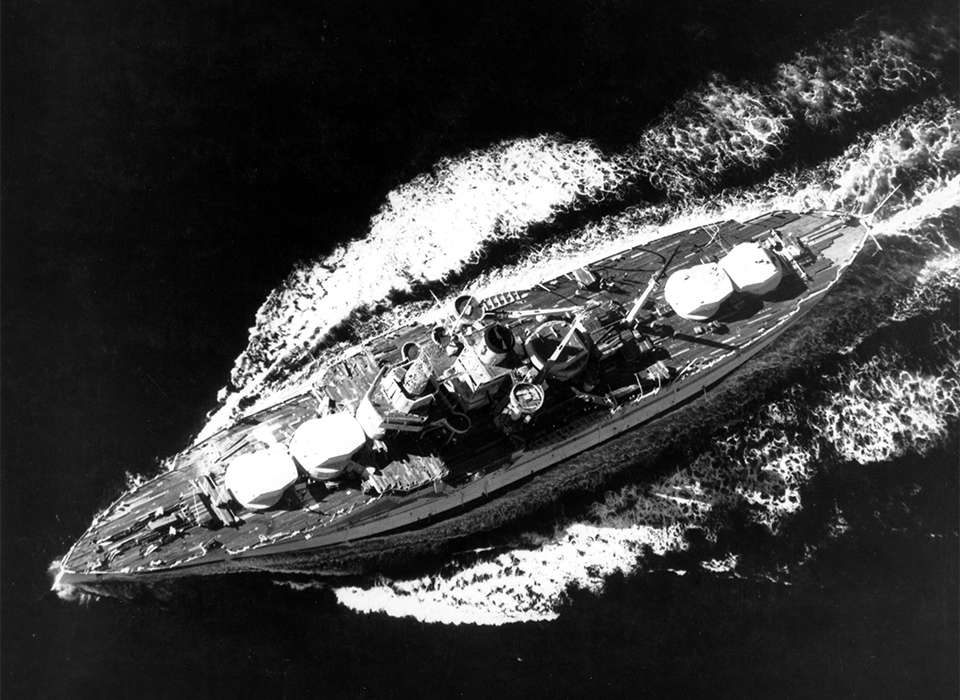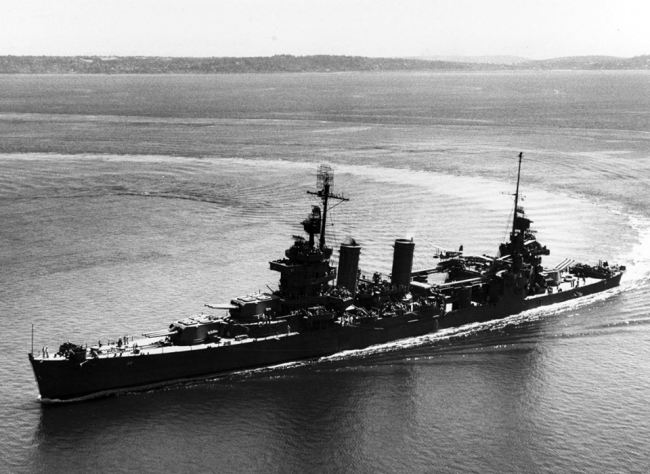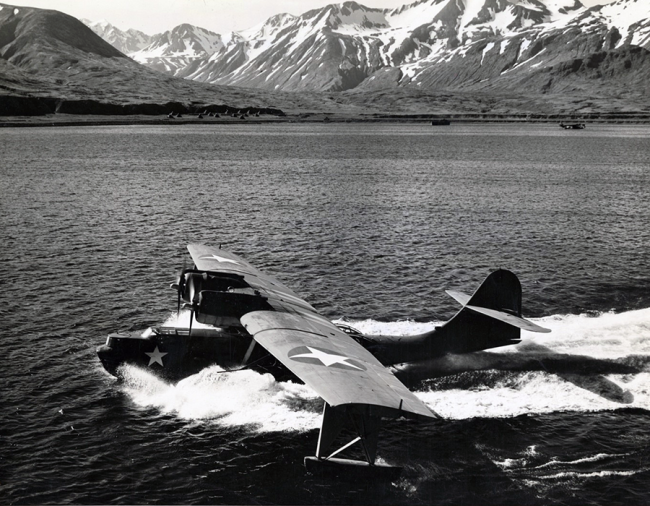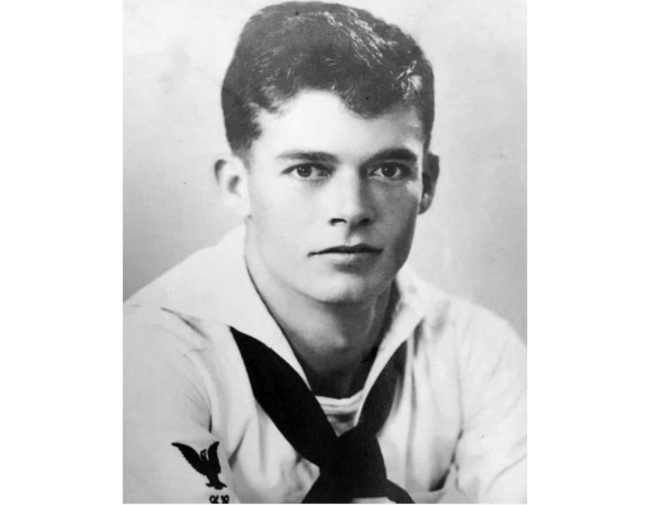Top image courtesy of the National Archives.
The Pearl Harbor attack wasn’t the first time the USS Utah had been bombed. The old battlewagon, launched in 1909, was used as a target ship after 1931. It spent the twilight of its career being pummeled for practice.
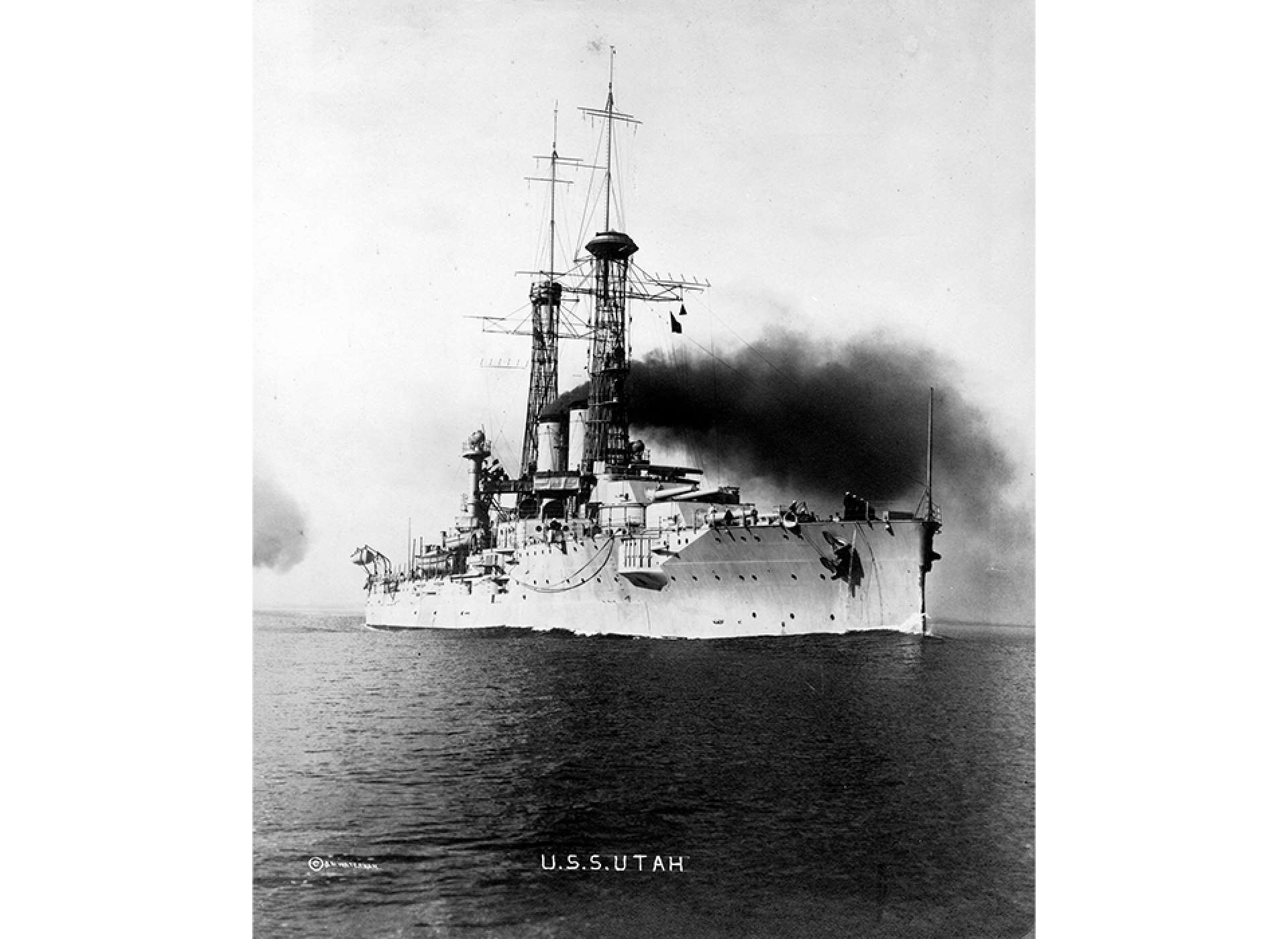
The Utah was nearly as old as Neptune when it was lost at Pearl Harbor. This image was shot of the vessel before the start of World War I. Courtesy US Naval History and Heritage Command.
Most famously, the Utah took part in “Joint Air Exercise Number 4” in 1937. In the ongoing debate between the Navy and the Army Air Corps about the potency of air attacks against capital ships, this action was a milestone.
Both participants in the dispute were somewhat disagreeable; on the waves, Navy brass were arrogant and firmly believed their big vessels could never be found, much less sunk by some buzzing aerial nuisance. Overhead were the pugnacious underdogs of the Army Air Corps, among them a grumpy navigator named Curtis LeMay.
In the exercise, the Utah would simulate a battle fleet skulking off the coast of California. The job of the USAAC bombers was to find the ship and “sink” it, using 50-pound practice bombs filled with water. The Navy slyly stacked the deck for the drill, choosing a time of the year that was usually cloudy, revealing wrong coordinates, and reporting late in order to make the interception difficult, if not impossible.
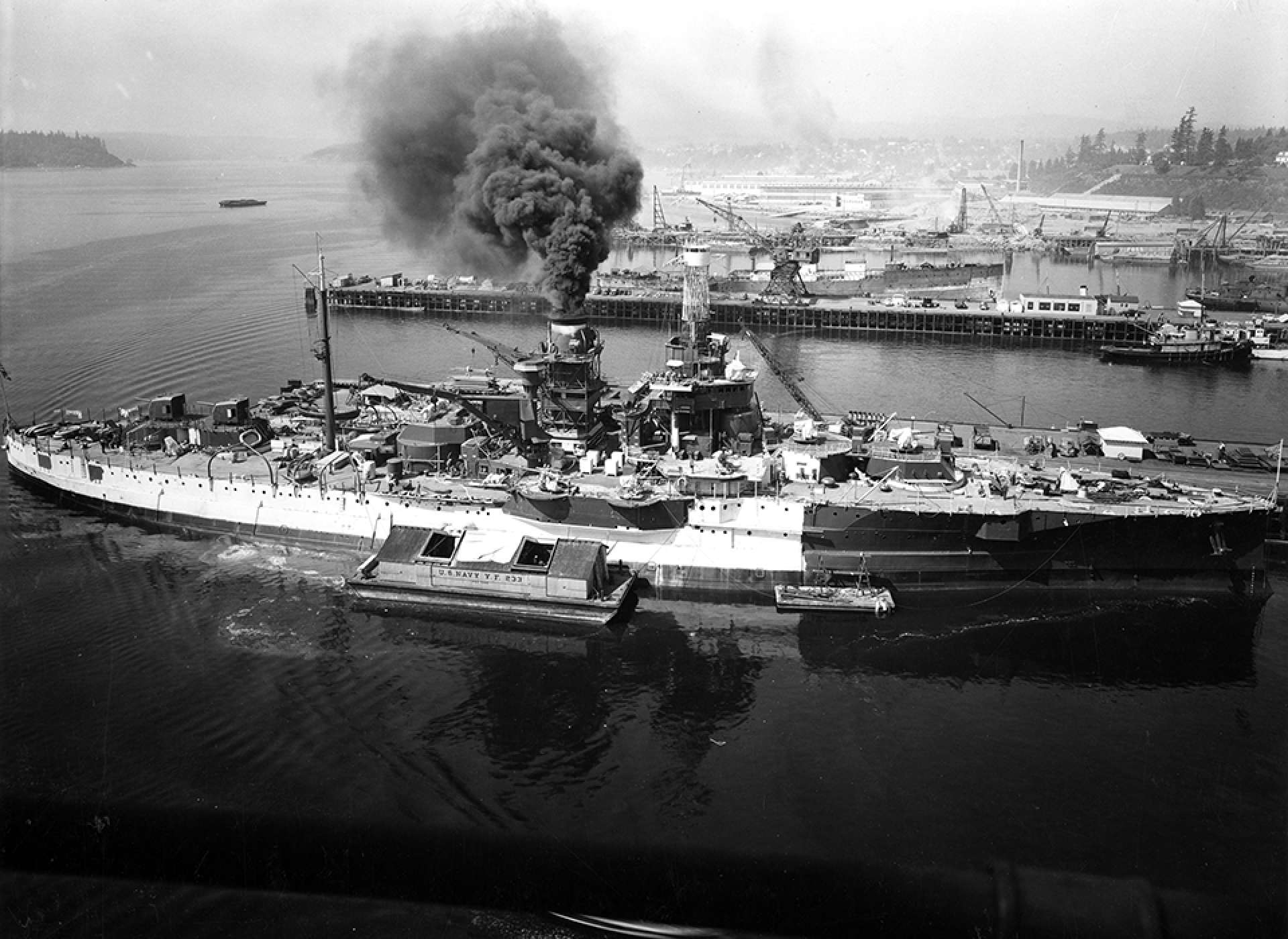
As tensions in the Pacific rose, the Utah underwent a refit at Puget Sound Navy Yard. The ship is seen here halfway through the application of camouflage paint in August of 1941. Courtesy US Naval History and Heritage Command.
Minutes before the exercise ended, the Utah briefly emerged from the cloud cover and an Air Corps bomber was there. The B-17 Flying Fortress walloped the ship with water bombs. Down below, the Navy men were certain they had eluded the planes and emerged victorious. Many sailors were topside as the projectiles smashed down. Several men were injured by flying fragments of the Utah’s deck. The Navy’s pride was even more severely wounded.
To the average seaman, at least those left unharmed, the episode was more amusing than aggravating. Former Utah crewman James M. White had this “Grand and Exhalted [sic] Order of Bomb Duckers” certificate among his possessions. Spelling aside, the certificate commemorates all of the times the Utah was the bull’s-eye and the beleaguered crewmen were left to clean up the mess. It seems almost Hollywood appropriate that the certificate is damaged.
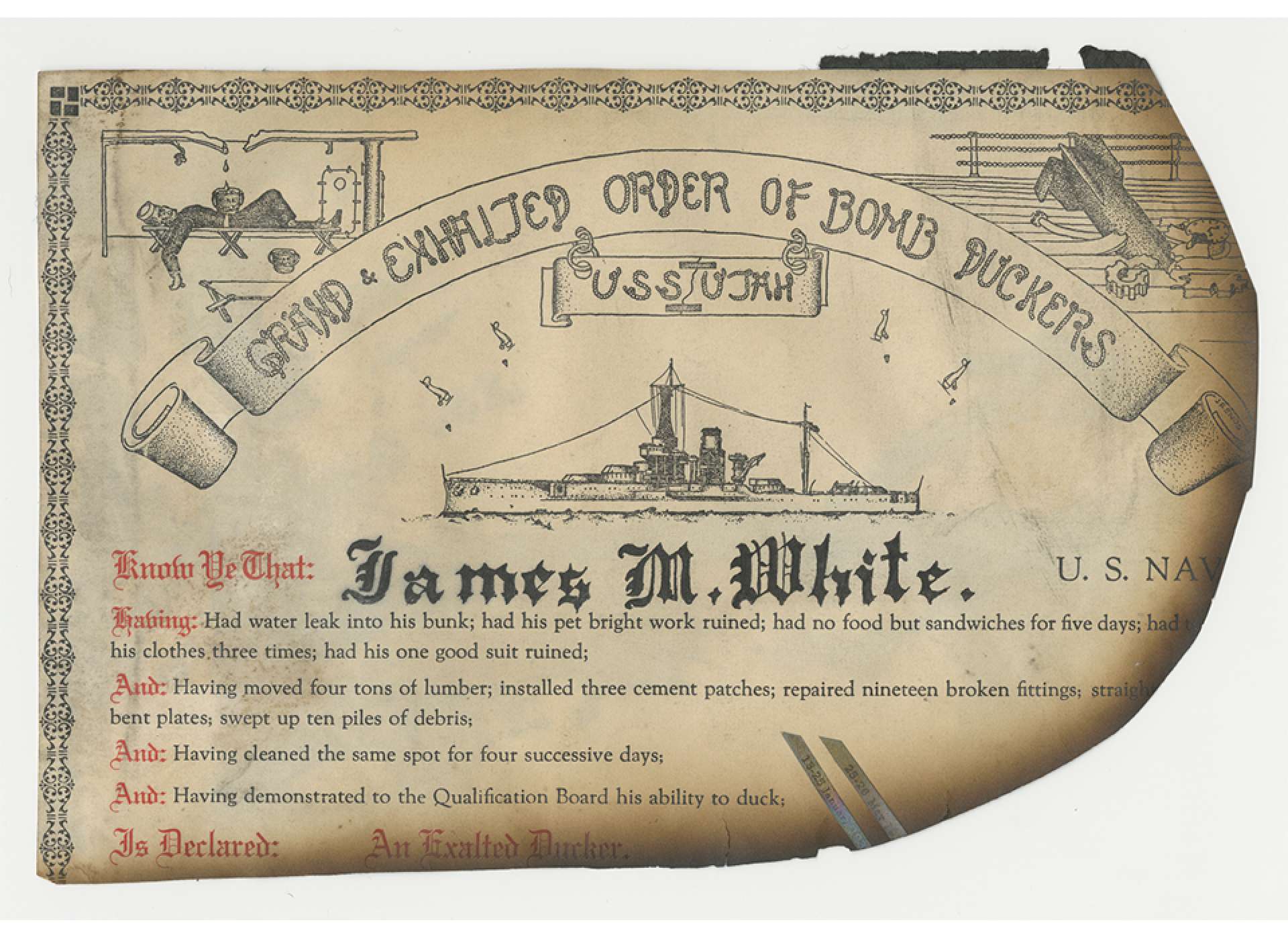
James White’s damaged Bomb Duckers certificate. The National WWII Museum, Gift of the Families of William E. White—Springhill, LA; Treby White Staten—Springhill, LA; and Florence White McCaskill—Texarkana, AR, 2013.273.011.
The Utah became a target one last time on December 7, 1941. While bolstered for attack from above, Japanese torpedoes hit the ship below the waterline. The Utah rolled over and sank, causing the deaths of 58 officers and men.
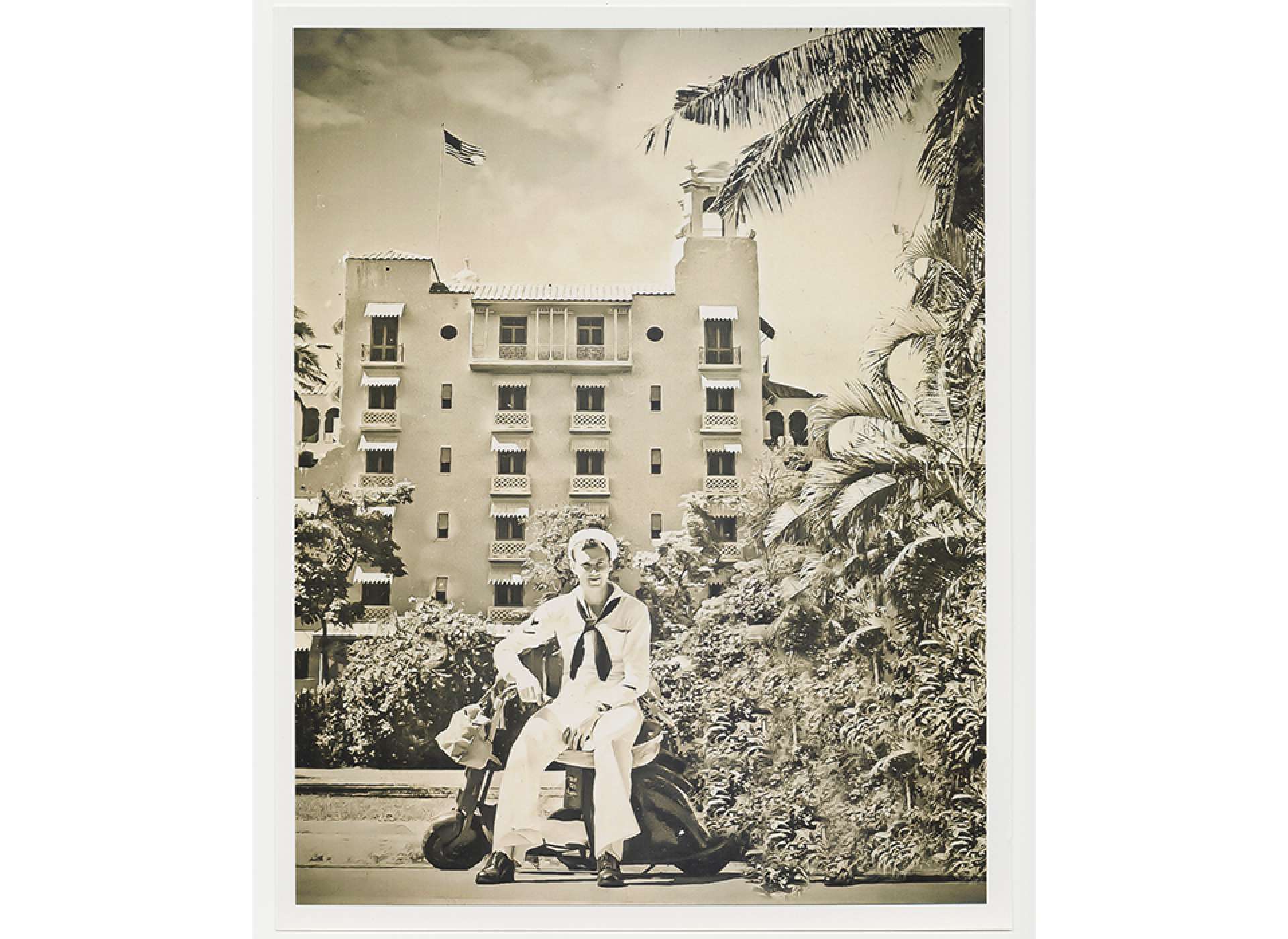
Gunner’s Mate James White photographed near the Royal Hawaiian Hotel on Waikiki Beach. The National WWII Museum, Gift of the Families of William E. White—Springhill, LA; Treby White Staten—Springhill, LA; and Florence White McCaskill—Texarkana, AR, 2013.273.
Gunner’s mate James M. White was not among them, but his luck didn’t last. After America’s entry into war, White went on to serve aboard submarines and completed many war patrols. White was killed in the sinking of the USS Tang (SS-306) on October 25, 1944.
Cite this article:
MLA Citation:
APA Citation:
Chicago Style Citation:
